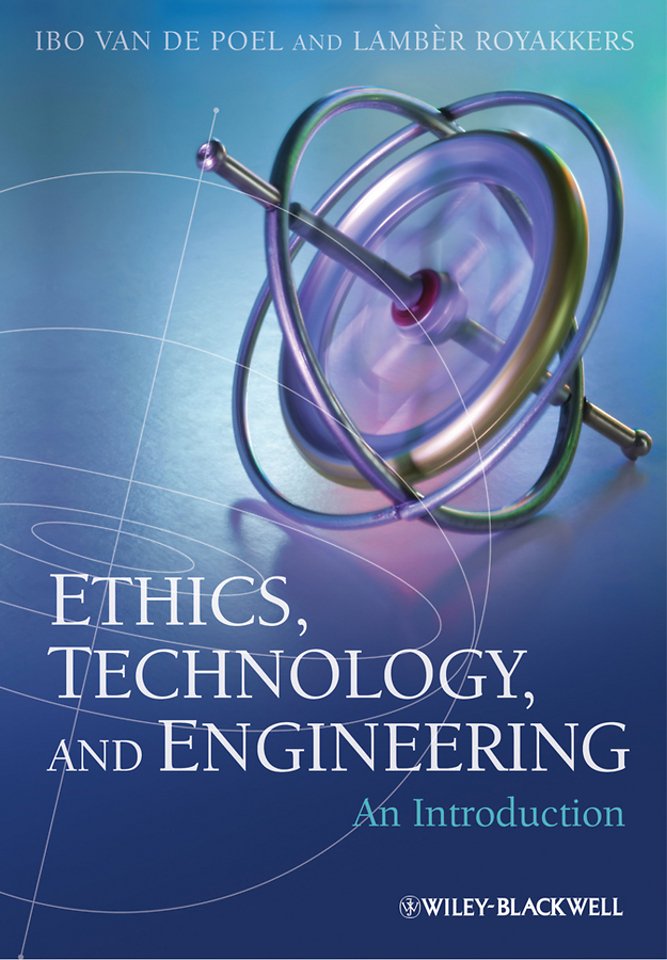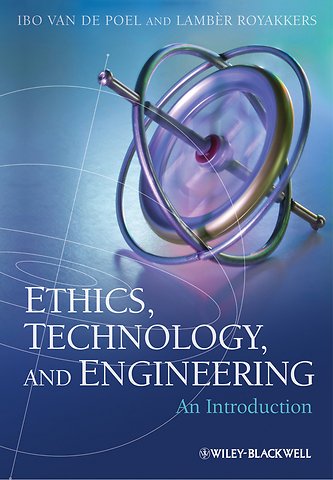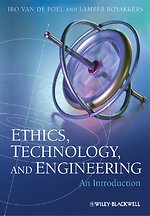



Ibo van de Poel is filosoof en werkzaam aan de Technische Universiteit Delft.
Meer over de auteursEthics, Technology. and Engineering
An Introduction
Samenvatting
Featuring a wide range of international case studies,
Ethics, Technology, and Engineering presents a unique and systematic approach for engineering students to deal with the ethical issues that are increasingly inherent in engineering practice.
- Utilizes a systematic approach to ethical case analysis –– the ethical cycle –– which features a wide range of real–life international case studies including the Challenger Space Shuttle, the Herald of Free Enterprise and biofuels.
- Covers a broad range of topics, including ethics in design, risks, responsibility, sustainability, and emerging technologies
- Can be used in conjunction with the online ethics tool Agora (
http://www.ethicsandtechnology.com)
- Provides engineering students with a clear introduction to the main ethical theories
- Includes an extensive glossary with key terms
Specificaties
Over Lambèr Royakkers
Inhoudsopgave
Introduction.
1 The Responsibilities of Engineers.
1.1 Introduction.
1.2 Responsibility.
1.3 Passive Responsibility.
1.4 Active Responsibility and the Ideals of Engineers.
1.5 Engineers versus Managers.
1.6 The Social Context of Technological Development.
1.7 Chapter Summary.
2 Codes of Conduct.
2.1 Introduction.
2.2 Codes of Conduct.
2.3 Possibilities and Limitations of Codes of Conduct.
2.4 Codes of Conduct in an International Context.
2.5 Chapter Summary.
3 Normative Ethics.
3.1 Introduction.
3.2 Ethics and Morality.
3.3 Descriptive and Normative Judgments.
3.4 Points of Departure: Values, Norms, and Virtues.
3.5 Relativism and Absolutism.
3.6 Ethical Theories.
3.7 Utilitarianism.
3.8 Kantian Theory.
3.9 Virtue Ethics.
3.10 Care Ethics.
3.11 Applied Ethics.
3.12 Chapter Summary.
4 Normative Argumentation.
4.1 Introduction.
4.2 Valid Arguments.
4.3 Deductive and Non–Deductive Arguments.
4.4 Arguments in Ethical Theories.
4.5 Fallacies.
4.6 Chapter Summary.
5 The Ethical Cycle.
5.1 Introduction.
5.2 Ill–Structured Problems.
5.3 The Ethical Cycle.
5.4 An Example.
5.5 Collective Moral Deliberation and Social Arrangements.
5.6 Chapter Summary.
6 Ethical Questions in the Design of Technology.
6.1 Introduction.
6.2 Ethical Issues During the Design Process.
6.3 Trade–offs and Value Conflicts.
6.4 Regulatory Frameworks: Normal and Radical Design.
6.5 Chapter Summary.
7 Designing Morality (Peter–Paul Verbeek).
7.1 Introduction.
7.2 Ethics as a Matter of Things.
7.3 Technological Mediation.
7.4 Moralizing Technology.
7.5 Designing Mediations.
7.6 Chapter Summary.
8 Ethical Aspects of Technical Risks.
8.1 Introduction.
8.2 Definitions of Central Terms.
8.3 The Engineer′s Responsibility for Safety.
8.4 Risk Assessment.
8.5 When are Risks Acceptable?
8.6 Risk Communication.
8.7 Dealing with Uncertainty and Ignorance.
8.8 Chapter Summary.
9 The Distribution of Responsibility in Engineering.
9.1 Introduction.
9.2 The Problem of Many Hands.
9.3 Responsibility and the Law.
9.4 Responsibility in Organizations.
9.5 Responsibility Distributions and Technological Designs.
9.6 Chapter Summary.
10 Sustainability, Ethics, and Technology (Michiel Brumsen).
10.1 Introduction.
10.2 Environmental Ethics?
10.3 Environmental Problems.
10.4 Sustainable Development.
10.5 Can a Sustainable Society be Realized?
10.6 Engineers and Sustainability.
10.7 Chapter Summary.
Study Questions.
Discussion Questions.
Appendix I: Engineering Qualifications and Organizations in a Number of Countries.
Appendix II: NSPE Code of Ethics for Engineers.
Appendix III: FEANI Position Paper on Code of Conduct: Ethics and Conduct of Professional Engineers.
Appendix IV: Shell Code of Conduct.
Appendix V: DSM Values and Whistle Blowing Policy.
Glossary.
References.
Index of Cases.
Index.
Vaak samen gekocht
Anderen die dit boek kochten, kochten ook
Rubrieken
- cadeauboeken
- computer en informatica
- economie
- filosofie
- flora en fauna
- geneeskunde
- geschiedenis
- gezondheid
- jeugd
- juridisch
- koken en eten
- kunst en cultuur
- literatuur en romans
- mens en maatschappij
- naslagwerken
- non-fictie informatief/professioneel
- paramedisch
- psychologie
- reizen
- religie
- schoolboeken
- spiritualiteit
- sport, hobby, lifestyle
- thrillers en spanning
- wetenschap en techniek
- woordenboeken en taal







